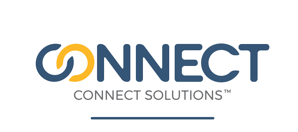You know that employee engagement is an important aspect of any firm’s work culture. And you also know that one of the best ways to achieve engagement is through employee recognition, both for their contributions and for being themselves. Ensuring that people feel valued and able to speak up is simply Engagement 101.
The challenge is building a workplace culture that encourages and enables employee recognition. Employees sometimes don’t want to recognize each other or feel that they can’t, and they may perceive management as giving credit where it isn’t due. Building a culture of employee recognition is no small task—but here’s how your firm can work toward it.
ENCOURAGE PEER-TO-PEER LEARNING
Want your employees to recognize each other for their knowledge and contributions? Get them working together. While you might think that teams are the only way to get employees to truly engage with each other, you should think about peer-to-peer learning. While teamwork is important, peer-to-peer learning crosses the boundaries of teams and departments.
What is peer-to-peer learning? It happens when your employees recognize each other as experts on certain subjects and approach each other to ask questions and learn more. If you have an in-house expert on health and safety, an employee with a question about safety in the workplace can approach the subject area expert, thus recognizing their expertise. The “expert” helps the other employee understand and learn—and both employees benefit.
USE SOCIAL RECOGNITION
Do you allow your employees to recognize each other? Just as peer-to-peer learning allows employees to recognize one another as subject area experts, social recognition allows your employees to recognize oneanother for their contributions. You can allow your employees to recognize each other in a number of ways; one of the most effective methods is the use of an employee engagement app.
What’s the benefit of social recognition? It allows your employees to call the shots. While management might overlook someone’s contributions, your employees likely have a much more intimate knowledge of who deserves credit or praise—and they can dole it out any time they see fit. Employees thrive on knowing that their contributions are valued, and having their peers recognize them is often just as meaningful as getting a reward from management—sometimes even more so.
A REWARDS PROGRAM
Once your employees are recognizing each other, it can be easier for you to pinpoint where to give recognition. A rewards program is a great way to build employee recognition in the workplace. While social recognition can be offered on a more frequent basis, you can use that to gather information about whom to reward.
Is there an employee who is constantly recognized for having outstanding ideas? Maybe there’s an employee everyone respects for being particularly knowledgeable. When you can see multiple employees praising another on a frequent basis, you know a reward won’t be misplaced.
CELEBRATIONS
While not every achievement requires cake and ice cream or confetti, take the time to celebrate employee achievements and milestones. This goes hand in hand with social recognition and a rewards program. Celebrate birthdays and work anniversaries, and recognize employees for their contributions. Celebrating is another form of employee recognition.
Be sure to celebrate when employees achieve goals, too. Similar to a reward structure, a celebration shows that you appreciate your employees’ hard work and value their contributions. It recognizes their efforts—often in a simple way, but one that is incredibly effective. So go ahead and celebrate the sales team’s record sales month. It will give them the incentive to try and beat goals again next month.


